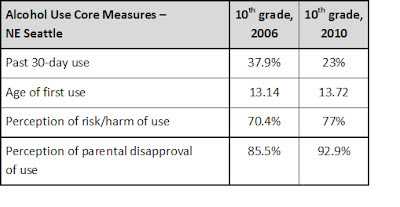Drug use, including the abuse of prescription medications and underage drinking, significantly affects the health and well-being of the Nation's youth and young adults. Substance use affects academic performance and military preparedness and is linked to crime, motor vehicle crashes and fatalities, lost productivity, and increase health care costs. Stopping use before it begins can increase an individual's chances of living a longer, healthier, and more productive life. Put simply, drug prevention saves lives and cuts long-term costs. Recent research has shown that each dollar invested in an evidence-based prevention program can reduce costs related to substance use disorders by an average of $18.
The strategy goes on to describe the many community-level prevention activities that are supported by federal dollars. Among them are Drug Free Communities (DFC) coalitions, such as Prevention WINS. A national evaluation of the 718 DFC coalitions found that youth substance use declined significantly in communities with DFC grantees.
In NE Seattle, served by the Prevention WINS coalition, underage drinking rates declined significantly between 2006 -- when the coalition was formed -- and 2010. During that time, the coalition's primary focus was the reduction of underage drinking rates that were higher than the state average. Many community organizations and individuals came together and conducted a variety of prevention strategies and activities that supported healthy decision making among middle and high school students.
The chart below shows the 2006 and 2010 alcohol-related data for 10th grade students in NE Seattle -- Nathan Hale and Roosevelt High School combined -- according to the Washington State Healthy Youth Survey.





